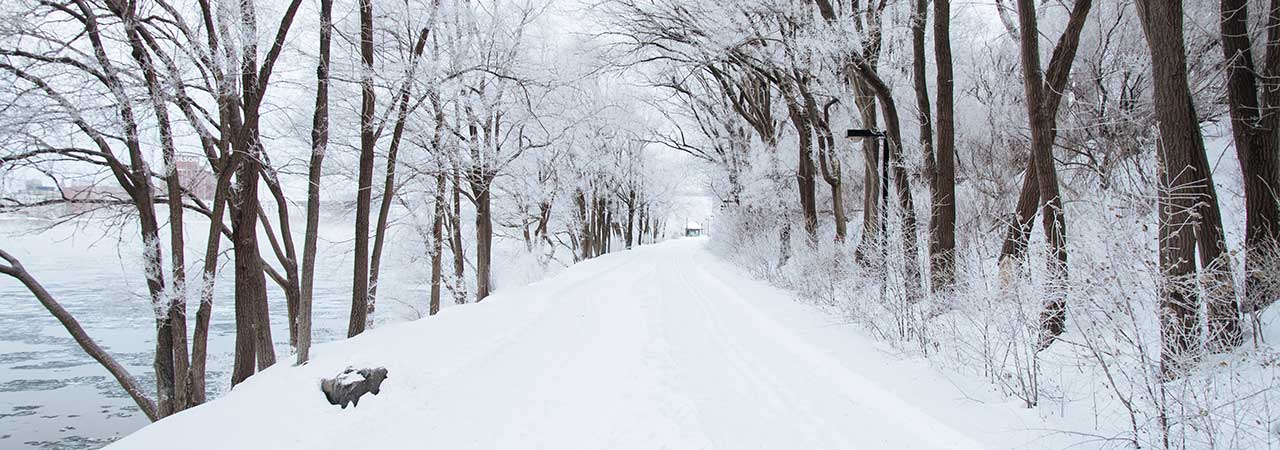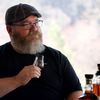Bourbons To Help You Stay Warm This Winter
As frigid weather swept the country—even the Deep South, where I live—this month, my taste turned to bold, high-alcohol bourbons. I found myself drinking even the most intense bourbon undiluted, out of my Glencairn glass, rather than with an ice cube or two.

Editors Note: Today’s post is from Jerry Ceppos, one of the semi-finalists who are applying to become a regular contributor to Bourbon & Banter. We hope you’ll read all of their posts and let us know what you think of each applicant by commenting below the post, sharing online or dropping us a note via email.
As frigid weather swept the country—even the Deep South, where I live—this month, my taste turned to bold, high-alcohol bourbons. I found myself drinking even the most intense bourbon undiluted, out of my Glencairn glass, rather than with an ice cube or two.
Had I gone over the edge?
It turns out that I hadn’t, at least when it comes to bourbon.
“It’s a human response to the climate,” said Bert C. Lynn, a chemistry professor at the University of Kentucky in Lexington, who likens my wintertime bourbon choices to the old-fashioned need to huddle around the campfire. “We’re going for savory, salty,” he said. “The overwhelming desire is for winter fare, the savory kinds of food. You want to eat meat!” In the summer, we want a light gin or tequila, he said.
Adam Harris, a brand ambassador for Beam Suntory, which produces 120 proof Knob Creek Single Barrel Reserve, said these big bourbons are “one of those things for an extra chilly night.”
Tim Knittel, an adjunct professor in bourbon studies (far better than my title of dean at a mass-communication school) at Midway University in Midway, Ky., agreed that yearning for these big bourbons is “absolutely the case. I found myself drinking Rare Breed in the winter.”
Wild Turkey Rare Breed is bottled at 112.8 proof. Most experts consider anything over 100 proof to be “overproof.” It’s also called “cask strength” or “barrel strength” bourbon when it goes into bottles undiluted, right out of the barrel. (“Proof” is twice the percentage of alcohol by volume. Thus, 100 proof bourbon is made up of 50 per cent alcohol.)
“Alcohol triggers the nerves that respond to hot vs. cold,” Knittel said. “Alcohol in concentration on the mouth and the tongue…triggers the nerves that respond to heat. It makes your brain think you’re warm.”
Knittel said that 30 per cent alcohol (or 60 proof) “is where it makes an impact. The nerves are burning and you think you’re on fire. In the winter, the warmth is comforting. In summer, it’s abrasive.”
Lynn, of the University of Kentucky, attributes our judgment of a bourbon’s flavor more to the nose than to the mouth and tongue.
“When you taste, you’re actually smelling it,” said Lynn, who teaches a class in spirit chemistry. He said the tongue actually has fewer taste sensors than the nose.
“You’ve got millions of olfactory sensors,” he explained. “Your brain is trying to interpret that. The higher the alcohol content, the higher it’s going to vaporize when it gets into your mouth.” Vaporizing—turning a liquid into fumes—makes the olfactory senses even more important.
Regardless of whether the sense of taste or the sense of smell is more important, I have two favorite intense, high-alcohol bourbons for winter drinking. (I’m notoriously fickle, so this list could change by next winter.)

Those two are Knob Creek Single Barrel Reserve at 120 proof and Stagg Jr. (the last bottles I purchased were bottled at 131.9 proof; the original release, in 2013, was released at 134.4 proof).
Your friends will taste the Knob 120 and say, “It doesn’t taste as if it’s 120 proof.” It has great legs, signaling its viscous mouthfeel and a satisfying, soft burn appropriate for a nine-year-old bourbon. (Some special bottlings for retailers are older.) The distiller, Beam Suntory, calls the color “dark, deep amber and henna.” To me, the color is more like copper. Vanilla permeates the aroma and the deep taste. I agree with the distiller’s description of the finish: “long and full; easy sipping.”
The proof varies from barrel to barrel, ranging from the low 120s to almost 130. Knob Creek brings the proof down to a consistent 120. The suggested retail price is $44.99.

On the other hand, friends who are new to bourbon will not say Stagg Jr. tastes like an 80-proof drink. Its distiller, Buffalo Trace, calls it a “robust bourbon,” an understatement. It is even thicker than Knob 120 and tastes even older than its age of eight or nine years.
The distiller says that the taste is “rich, sweet, chocolate and brown sugar…in perfect balance with the bold rye spiciness… The boundless finish lingers with hints of cherries, cloves and smokiness.” I would have to say that the alcohol drowns out a few of those adjectives but I agree: The burn lasts forever. For me, that’s a good thing.
However, I should point out that my Bourbon & Banter career may be a short one. In a review shortly after Stagg Jr. was released in 2013, Bourbon & Banter wrote, “There’s simply no balance of flavors. While there was a solid burn that came back for a visit, it was very acute and uninspiring. Adding a bit of water chopped down the alcohol burn and brought out some of the softer flavor notes like honey but it also imparted a bit of a medicinal flavor that I couldn’t identify.”
Which explains why some people like Chevrolets and some people like Fords.
For me, the recommended retail price for Stagg Jr. is another bargain, at $49.99; I pay $44.39 buying it by the case from my favorite retailer, who sometimes has to search for it. I’ve seen it listed on the Internet for as much as $120 a bottle. It is shipped a few times a year rather than just once, which is the case for its dad, hard-to-find George T. Stagg, part of the Buffalo Trace Antique Collection. Stagg Jr. “was created to be more accessible both in price and availability” than George T. Stagg, the distiller says.
I drink both of these bourbons neat, from my Glencairn glass. And did I say that they are perfect for a cold winter night?

